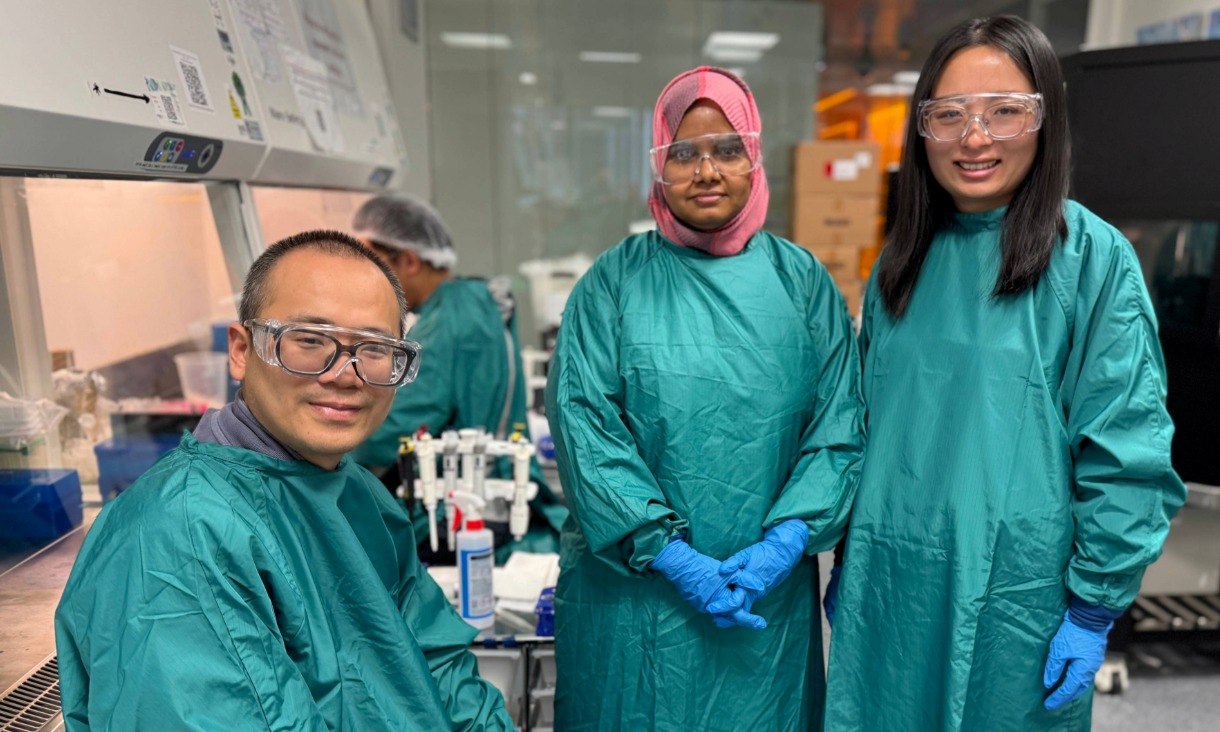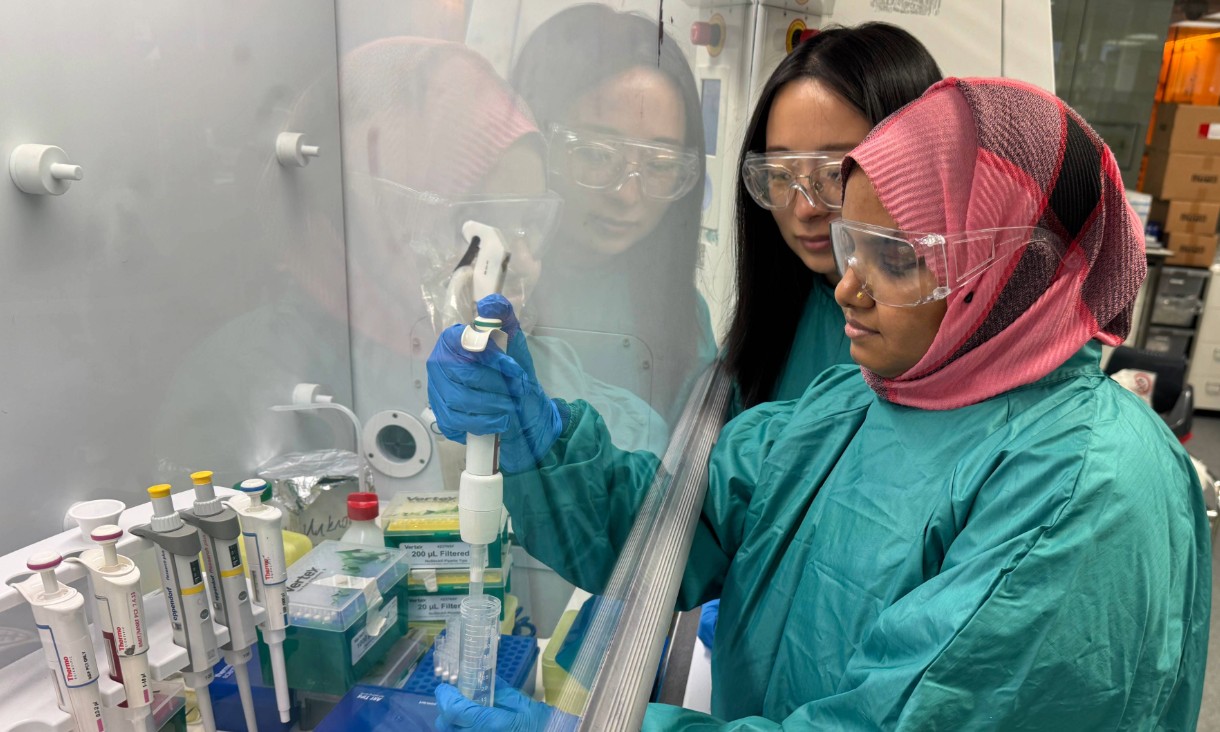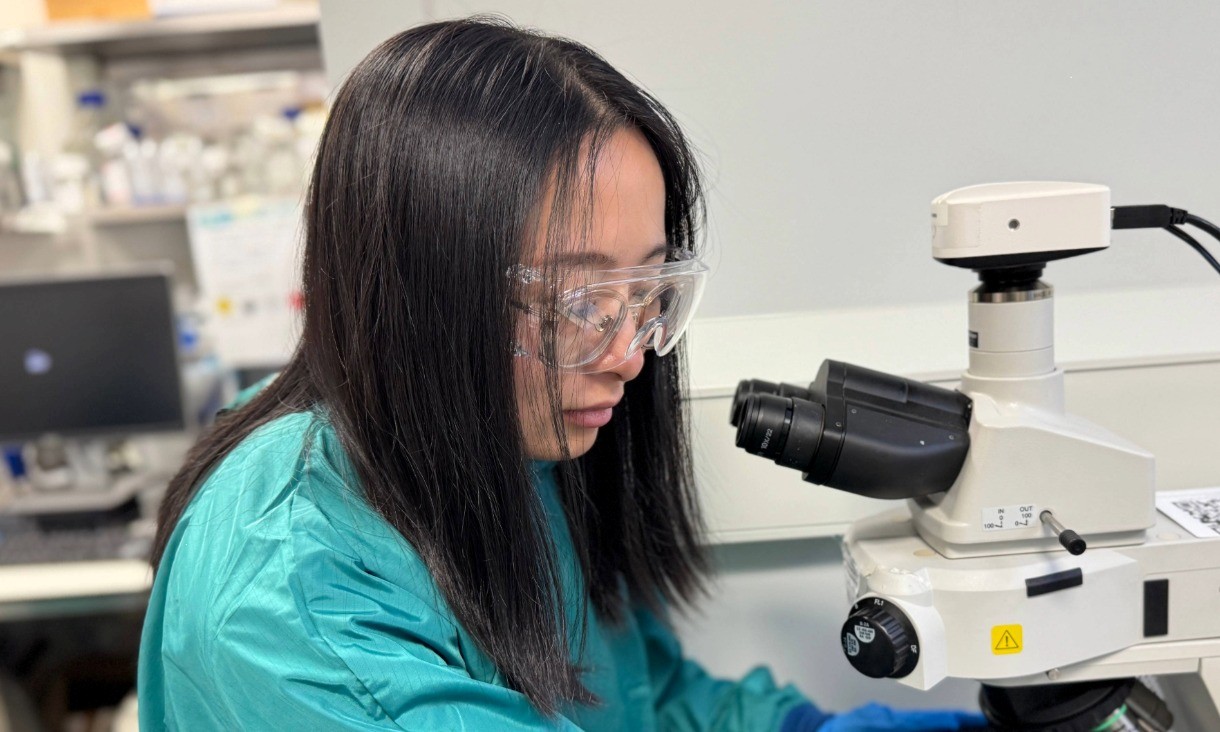An international research team led by RMIT University has created tiny particles, known as nanodots, made from a metallic compound that can kill cancer cells while leaving healthy cells largely unharmed.
While this work is still at the cell-culture stage - it hasn't been tested in animals or people - it points to a new strategy for designing cancer treatments that exploit cancer's own weaknesses.
The particles are made from molybdenum oxide, a compound based on a rare metal called molybdenum, which is often used in electronics and alloys.
The study's lead researcher Professor Jian Zhen Ou and Dr Baoyue Zhang, from the School of Engineering, said tweaking the chemical makeup made the particles release reactive oxygen molecules - unstable forms of oxygen that can damage cell components and trigger cell death.
In tests, the particles killed three times more cervical cancer cells than healthy cells over 24 hours. Importantly, they worked without needing light, which is unusual for this kind of technology.

Professor Jianzhen Ou (left), Dr Sanjida Afrin (centre) and Dr Baoyue Zhang (right) in the lab at RMIT University's Micro Nano Research Facility, which is part of the Victorian Node of the Australian National Fabrication Facility. Credit: Will Wright, RMIT University
"Cancer cells already live under higher stress than healthy ones," Zhang said.
"Our particles push that stress a little further - enough to trigger self-destruction in cancer cells, while healthy cells cope just fine."
The collaboration involved Dr Shwathy Ramesan at The Florey Institute of Neuroscience and Mental Health in Melbourne and researchers from institutions in China including Southeast University, Hong Kong Baptist University and Xidian University, with support from the ARC Centre of Excellence in Optical Microcombs (COMBS).
"The result was particles that generate oxidative stress selectively in cancer cells under lab conditions," she said.

Dr Baoyue Zhang and Dr Sanjida Afrin work under a fume hood at RMIT University's Micro Nano Research Facility, which is part of the Victorian Node of the Australian National Fabrication Facility. Credit: Will Wright, RMIT University
How the innovation works
The team adjusted the recipe of the metal oxide, adding tiny amounts of hydrogen and ammonium.
This fine tuning changed how the particles handled electrons, helping them produce more of the reactive oxygen molecules that drive cancer cells into apoptosis - the body's natural clean-up process for damaged cells.
In another test, the same particles broke down a blue dye by 90 per cent in just 20 minutes, showing how powerful their reactions can be even in darkness.
Most current cancer treatments affect both cancerous and healthy tissue. Technologies that more selectively stress cancer cells could lead to gentler, more targeted therapies.
Because these particles are based on a common metal oxide rather than expensive or toxic noble metals like gold or silver, they could also be cheaper and safer to develop.

Dr Baoyue Zhang at RMIT University's Micro Nano Research Facility, which is part of the Victorian Node of the Australian National Fabrication Facility.
Next steps for industry and clinical researchers
The COMBS team at RMIT is continuing this work, with next steps including:
- targeting delivery systems so the particles activate only inside tumours.
- controlling release of reactive oxygen species to avoid damage to healthy tissue.
- seeking partnerships with biotech or pharmaceutical companies to test the particles in animal models and develop scalable manufacturing methods.






